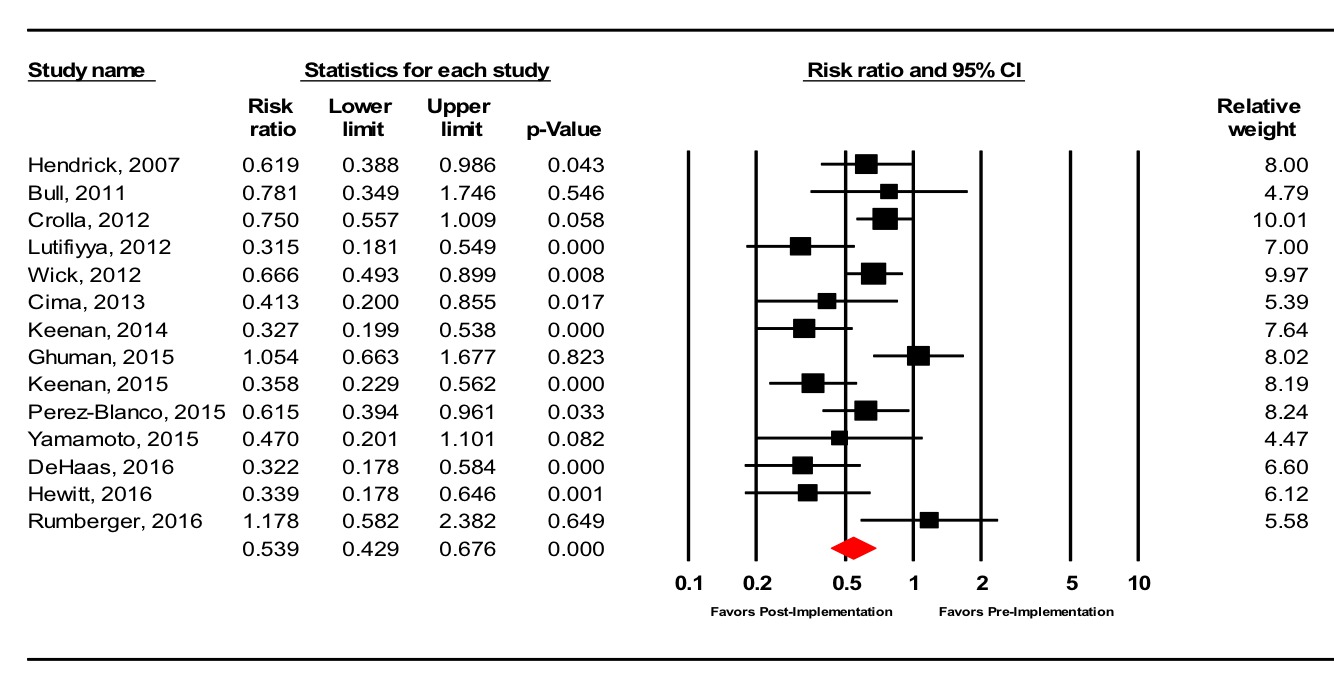|
Back to 2017 Posters
THE GOAL OF REACHING ZERO; HOW BUNDLED INTERVENTIONS DECREASE SURGICAL SITE INFECTIONS POST COLORECTAL SURGERY: A META-ANALYSIS
Alek Zywot*1,2, Christine S. Lau1,2, Subroto Paul1
1Department of Surgery, Saint Barnabas Medical Center, Livingston, NJ; 2Saint George’s University School of Medicine, St. George, Grenada
Introduction: Colorectal surgeries (CRS) have one of the highest rates of surgical site infections (SSI) with rates ranging from 15.1% to over 30%. These infections in turn increase length of stay and overall costs. With the goal of decreasing SSI rates, prevention “bundles” or sets of evidence based interventions are being tested and implemented. To further this goal, this meta-analysis examines the impact of prevention bundles on SSIs after CRS.
Methods: A comprehensive literature search of all published studies examining the use of CRS SSI bundles was conducted using PubMed, Google Scholar, and Cochrane Central Registry of Controlled Trials (1966-2016). Studies using prevention SSI bundles in patients undergoing CRS, with pre-implementation and post-implementation outcome SSI data were included. The incidence of SSIs (including superficial, deep, and organ or space SSIs) was analyzed.
Results: 14 studies with 6,299 participants (3,649 pre-intervention and 2,650 post-intervention) were analyzed. Following bundle implementation, the risk of SSIs after CRS was reduced by 46.1% (RR = 0.539; 95% CI, 0.429 - 0.676; p<0.001). Superficial SSI risk decreased 53.3% (RR = 0.467; 95% CI, 0.306 - 0.713; p<0.001), organ or space SSI risk decreased 45.3% (RR = 0.547; 95% CI, 0.395 - 0.758; p<0.001), and deep SSI risk had a no-significant reduction in risk of 45.3% (RR = 0.547; 95% CI, 0.271 - 1.105; p=0.093).
Conclusion: The use of a SSI bundle in CRS surgery is associated with a significant reduction in the risk of SSIs. Although further studies are required to identify the optimal bundle components, surgeons should consider implementing a prevention bundle.

Back to 2017 Posters
|


